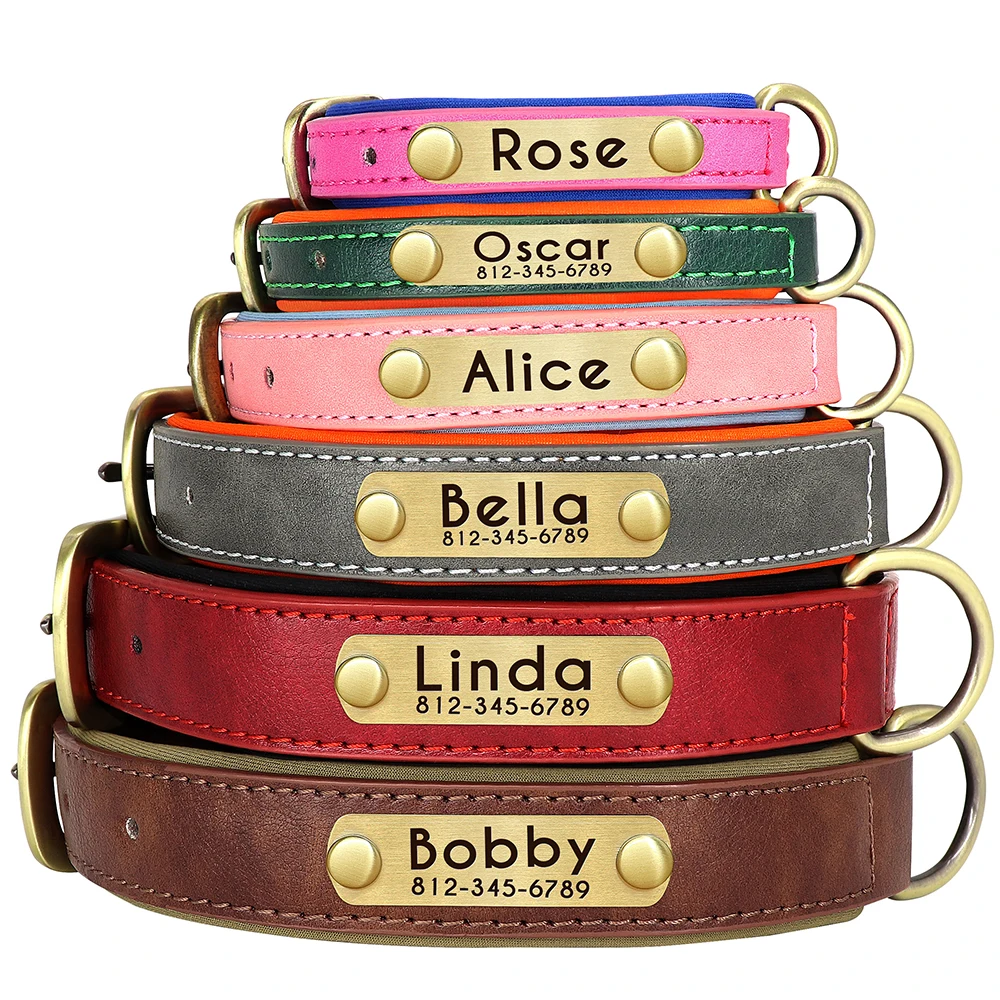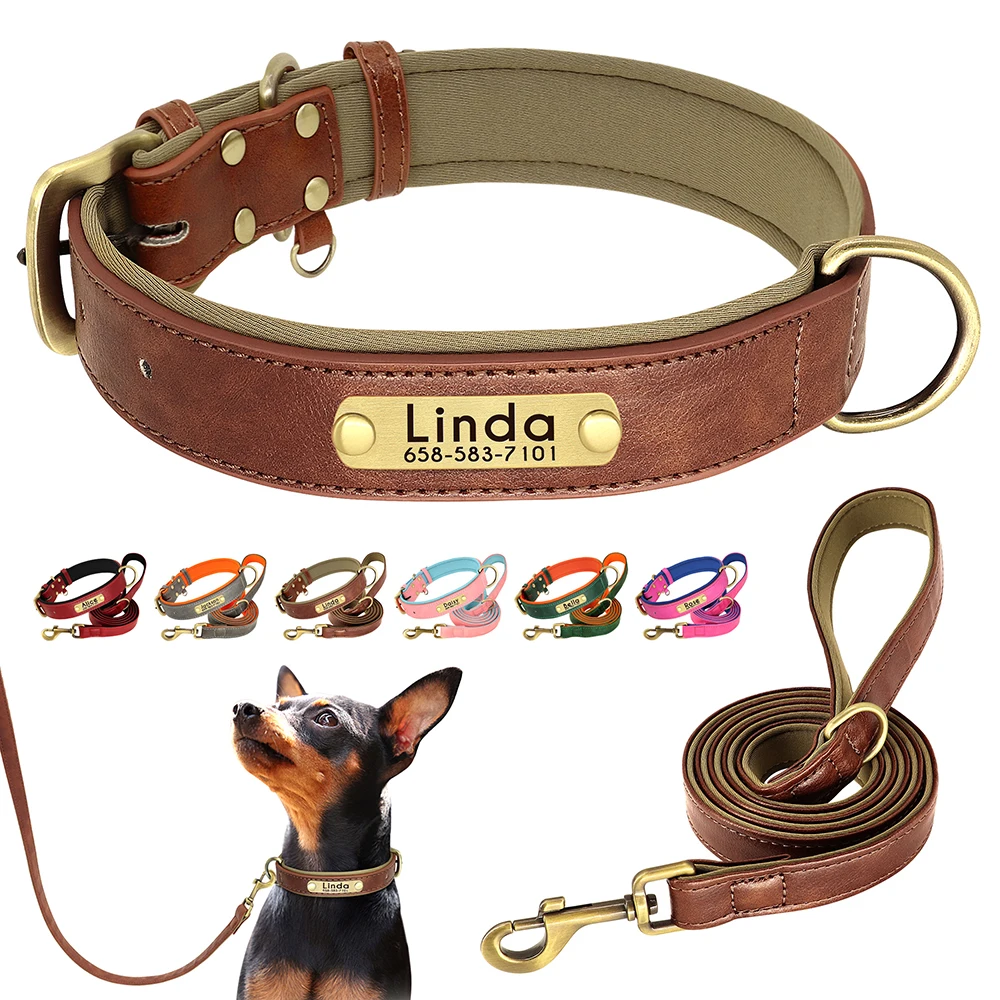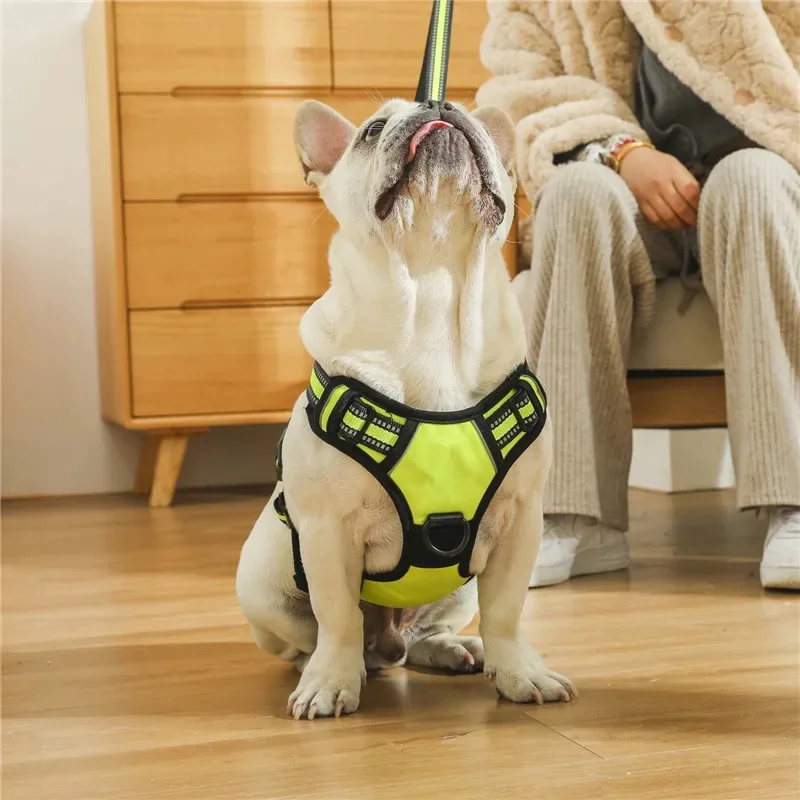Pros and Cons of Dog Collars
When choosing between a dog harness vs collar, consider both. Let’s explore their pros and cons.

The Convenience and Variety of Collars
Collars are familiar and easy to use for most dog owners. They come in many designs, materials, and colors. This makes them a stylish choice for showcasing your pup’s personality. Collars are convenient for attaching ID tags, which is a legal requirement in some places. You can choose from flat collars, martingale collars, and more to fit your dog.
Potential Risks for Dogs With Sensitive Necks
Not all dogs suit wearing a collar, especially if they pull on the leash. This pulling can strain their neck and cause injury. It can also harm dogs with conditions like eye issues or neck injuries. For breeds with sensitive necks, collars might not be the best choice.
Identification and Legal Requirements
In many areas, it’s a legal must for dogs to wear identification in public. The D ring on collars is a handy spot for ID tags. Always make sure your dog wears some form of ID, which can be vital in case they get lost.
Benefits of Using Dog Harnesses
Choosing a dog harness over a collar can offer many benefits for your canine companion. Let’s delve into some primary advantages of harness use.
Pressure Distribution and Reduced Neck Strain
Harnesses are designed to spread the pressure caused by pulling or tugging across a larger area of your dog’s body. Unlike collars, which concentrate force around the neck, a well-fitted harness can greatly reduce neck strain. This is crucial for preventing injury to your dog’s trachea and spine.
Security Aspects of Harnesses
Harnesses offer superior security for your dog, particularly for those that are adept at slipping out of collars. They fasten around the body, ensuring that your furry friend stays safely by your side during walks. Moreover, the right harness can prevent escapes and give you better control over your dog’s movements.
Variety of Harness Styles for Different Needs
Dog harnesses come in a multitude of styles to cater to various requirements. Whether you have a strong puller or a small puppy learning the ropes, there is a harness to help. From Y-shaped harnesses that allow for freedom of movement to dual clip harnesses for training, each style has its specific use. When choosing a harness, consider your dog’s body type and walking behavior to pick the most appropriate one.
Considerations for Proper Fit and Training
Making sure your dog’s walking aid fits well is vital. It keeps them comfy and safe. Let’s look at how to find the right fit and use harnesses in training.
Finding the Right Fit for Comfort and Safety
A good fit is key for any dog gear. For collars, there should be enough space to slip in two fingers. Too tight, and it could hurt your dog. Too loose, and they might escape. With harnesses, check the fit around their body. It should be snug, but not too tight. Look at where it rests on your dog’s back and chest. It shouldn’t rub or restrict movement. A proper fit means better comfort and safety on walks.

Harnesses as a Training Aid for Puppies and Pullers
Harnesses can be a great help with training. They’re especially good for puppies just starting leash training. A harness can give you more control over where your puppy goes. This can help teach them not to pull. For dogs that already pull, consider a front-clip harness. This can discourage pulling by redirecting them towards you. Training with a harness can take time, but patience pays off.
The Importance of Dual Clip Harness for Control
For the strongest pullers, a dual clip harness can be a game-changer. This type of harness has two places to attach the leash: one on the back and one on the chest. It gives you more control. If your dog tries to pull, the front clip helps guide them back to you. The back clip is there for when they’re walking nicely. It’s a great tool for training your dog to walk well on a leash.
Special Cases for Harness Usage
When it comes to dog harness vs collar, special cases call for specific choices.
Dogs That Should Always Wear Harnesses
Certain dogs should always wear harnesses for safe walking. These include puppies, seniors, and those with injuries. Harnesses protect their fragile bodies. Training also becomes easier with harnesses, offering better control.
Breeds Prone to Airway and Neck Issues
Breeds with short noses, like Bulldogs and Pugs, need harnesses. Their airways are easily blocked. Harnesses prevent pressure on their necks, allowing them to breathe better during walks. Also, small toy breeds with delicate necks benefit from harnesses to prevent injuries.
Impact on Your Dog’s Health
Preventing Injury and Strain with the Right Gear
Using the right walking aid can prevent injuries. A snug harness or collar can protect a dog’s neck and spine. It helps distribute pressure when they pull. This keeps walks safe and comfy. Choose gear based on your dog’s size and strength. Small dogs may need lightweight collars. Strong pullers benefit from sturdy harnesses. Always check for a proper fit.
Ensuring Enjoyable and Safe Walks
The right choice in gear makes walks fun and safe. A well-fitted collar or harness lets dogs explore without strain. It also helps owners feel secure. Dogs enjoy walks more when they’re comfy. Safe gear means less worry for owners, more fun for dogs. Use front-clip harnesses for training pups not to pull. A dual clip harness provides more control. This helps keep walks enjoyable for both.
Training Advantages of Collars and Harnesses
When it comes to training your dog, both collars and harnesses offer unique benefits. Proper training with these aids can make walks and obedience much smoother.
How Collars and Harnesses Complement Training
Collars are great for basic leash training. They allow for quick correction if your dog strays or misbehaves. But they’re not ideal for dogs that pull, as they can cause neck strain. Harnesses shine here. They distribute pressure across the body, which is safer for your dog. A front-clip harness, for example, discourages pulling by steering your dog towards you. The dual clip harness, combining front and back hooks, offers control and teaches good leash manners.
Harnesses also work well for energetic puppies. They provide guidance without overwhelming their little bodies. For certain breeds, like those with delicate necks, harnesses support safe and effective training.

Combined Use for Training and Identification Purposes
Using a collar and harness together can be handy. A collar holds ID tags, which is required by law in some regions. During training sessions, a harness can offer more control and safety. Switching to a collar post-training allows your dog to carry identification easily.
In conclusion, choose a harness or collar based on your dog’s needs, health, and training goals. Ensure the right fit for both, and use them to guide your dog toward better walking habits. Remember, patience and consistency are key in dog training. Offer praise and treats to reinforce good behavior. Whether you opt for a harness or collar, the goal is always a happy and well-behaved canine companion.
